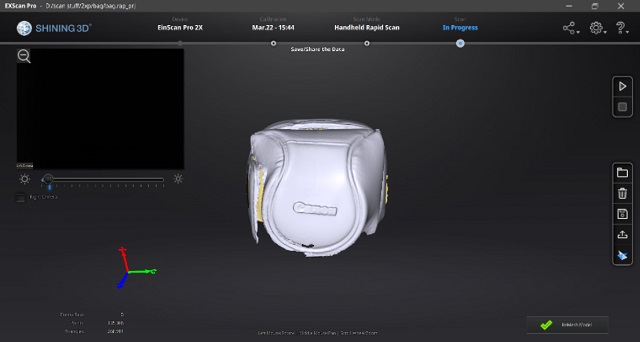
We shared some tips of scan modes selection in last EinScan Best Practices. After trying to scan different kinds of objects, you may notice that there are objects that are much more difficult to scan than others. The EinScan line of scanners use white structured light to scan objects. This means that as good as the EinScan is, it is limited to the science behind white light. And while reasons tend to vary, we’ve narrowed down the most common reasons an item can be difficult to scan and are sharing a few pointers to improve results.
Reflective Surfaces
Scanning shiny objects such as objects with metallic or glossy finishes can prove to be a challenge. The more reflective the part, the more noise it will cause and in some cases the scanner can fail to recognize the piece altogether. The reason for this is that the reflected light will fail to be captured correctly by the scanner’s cameras. Afterall scanners are 3D cameras first and foremost. Luckily, there is a very simple solution that is very common in the industry; scan spray. Scan spray works by dulling the sheen of an object and coating it with a fine layer of powder. The object once sprayed will not only be less reflective but also nearly white, the easiest color for a white light scanner to capture. The trick is to not cover the item in powder but just lightly apply it to dull the reflectiveness and allow for the acquisition of data.

Dark Items:
Scanning black or very dark objects can also prove to be a challenge. Unlike reflective surfaces where the scanner is receiving too much noise and is overexposed, dark objects absorb light and do not relay enough data to the scanner to be visible. You will find that the EinScan Pro 2X can scan dark objects to an extent by turning up the brightness in the software, but some items may prove too dark even under the highest brightness settings. The solution here is the same as for reflective surfaces; scan spray. Spraying the object will turn it white which makes it easier to scan.


with half of the camera case scan sprayed

with the entire camera case scan sprayed
Scanning transparent objects like glasses is in same way of reflective objects and dark items. In addition, we do not recommend to use the EinScan line of scanners to scan moving or vibrating objects, lattice structure with many small deep holes, hairy object like human hair and fur.

We hope that with this easy-to-follow guide on scanning we’ve made your scans that much easier. Please feel free to reach out to us directly should you have any questions. Send any technical questions to einscan_support@shining3d.com . For sales related info or pricing please contact sales@shining3d.com





